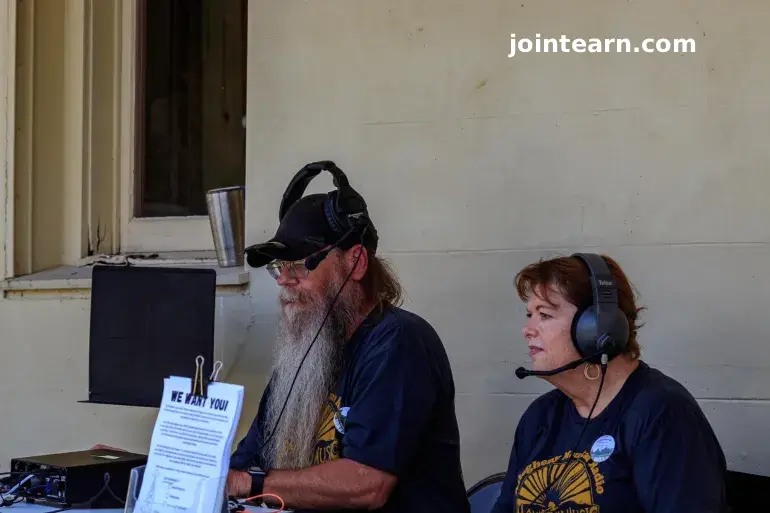
When the Corporation for Public Broadcasting (CPB) lost its federal funding this fall, it marked more than just a budgetary shift — it signaled an existential crisis for hundreds of small local radio stations across the United States. Among the hardest hit is Allegheny Mountain Radio (AMR), a lifeline for rural communities along the Virginia–West Virginia border.
For Scott Smith, AMR’s general manager, the impact of losing 65 percent of the station’s budget is devastating. “We are here to serve our communities,” Smith said. “We provide emergency alerts, weather forecasts, local news, and even school closings. When disaster strikes, people turn to us first — and now, that vital service is in jeopardy.”
A Lifeline for Rural Communities
AMR, which operates three affiliates across Bath and Pocahontas Counties in West Virginia and Highland County in Virginia, is not just another radio station. It’s a critical communication hub in an area where cell service and broadband access are limited, largely due to its proximity to the National Radio Quiet Zone (NRQZ) — a region that restricts radio frequencies to protect the Green Bank Observatory.
“When there’s flooding or severe weather, people rely on us,” added Heather Nidly, AMR’s program manager. “We’ve had people come to the station asking us to broadcast messages to loved ones because their phones stopped working.”
Trump’s Defunding Push and Its Broader Impact
The crisis stems from the public broadcasting cuts included in President Donald Trump’s 2025 tax and spending bill, which retracted $9 billion in government funding, including $1 billion for the CPB. The rescission reversed allocations previously approved for 2026–2027, leaving community broadcasters scrambling to fill funding gaps.
Trump has repeatedly targeted public media outlets — including NPR and PBS — for what he calls “liberal bias.” The administration cited reports from the Media Research Center, a conservative watchdog group, claiming PBS and NPR favored Democratic viewpoints. Critics say these moves represent a larger attempt to silence independent and regional voices that do not align with the White House narrative.
Big Market Stations Can Adapt — Small Stations Cannot
While major public broadcasters like WNYC (New York City) and KERA (Dallas) lost around 4–5 percent of their funding, their large donor bases can often absorb such shocks. In contrast, stations like Allegheny Mountain Radio, which rely on federal funding for the majority of their revenue, have little safety net.
“We’re in a very rural area,” Smith explained. “There are few businesses and not enough donors to make up for the lost federal support. Without CPB funding, our station simply cannot survive.”
Industry analysts warn that up to 15 percent of public media stations may close permanently within two years if no new funding sources emerge.
Grassroots Rescue Efforts
Former NPR product manager Alex Curley, who founded the “Adopt A Station” initiative, said his platform has already directed thousands of dollars in emergency donations to struggling local stations. “People are stepping up now, but the real challenge will be maintaining that support over time,” Curley noted. “Public media stations are not just about news — they are public safety infrastructure.”
Curley emphasized that community radio stations are often the only real-time emergency broadcasters in rural areas. “When a flood hits or a wildfire spreads, these stations can literally save lives,” he said.
PBS and NPR Face Parallel Crises
Public broadcasting television outlets are also suffering. PBS President Paula Kerger warned that smaller affiliates serving rural regions could face closure within months. “Many of our stations that provide free, local programming and emergency alerts will now be forced to make devastating cuts,” Kerger said following the Senate’s vote.
NPR CEO Katherine Maher echoed those concerns, calling public radio “a lifeline for millions of Americans.” She noted that during a recent 7.3-magnitude earthquake off Alaska, NPR-affiliated stations issued immediate tsunami warnings that saved lives.
Erosion of Free Media and Political Pressures
The CPB funding crisis coincides with broader political pressure on the media. The Trump administration has escalated attacks on journalists and broadcasters, including lawsuits against The New York Times and public criticism of late-night hosts like Stephen Colbert and Jimmy Kimmel following politically charged segments.
Meanwhile, the U.S. Agency for Global Media, which oversees Voice of America (VOA) and Radio Free Europe/Radio Liberty (RFE/RL), has also suffered severe budget cuts under the leadership of Kari Lake, a Trump ally. VOA’s newsroom operations have effectively halted, and over 500 employees were nearly laid off before a federal court intervened.
The Future of Public Broadcasting
From the Reagan era to Mitt Romney’s 2012 campaign, Republican leaders have long questioned whether public broadcasting should be federally funded. However, analysts warn that privatization would destroy the accessibility and community value that define local public media.
As Smith and Nidly fight to keep Allegheny Mountain Radio alive, their story underscores a national reckoning: What happens to public service journalism when government support vanishes?
“For decades, we’ve been the voice of this region,” Smith said. “Without us, people here won’t just lose a radio station — they’ll lose their connection to each other.”
Leave a Reply